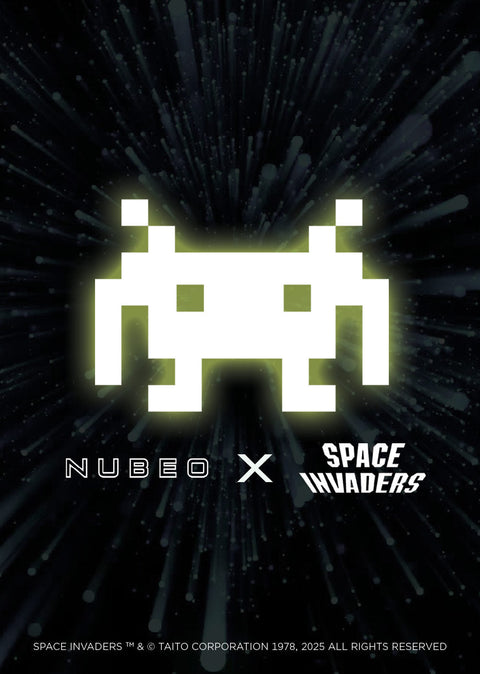Few games have had the cultural staying power of Space Invaders. First released in 1978, this pixelated alien-shooting arcade classic didn’t just launch a gaming craze—it helped define an era. The simple concept of moving a cannon across the screen and defending Earth from descending rows of aliens was a hit not just in arcades but across entertainment as a whole.
But Space Invaders isn’t just a nostalgic relic. Over the decades, it’s been cleverly hidden in movies, TV shows, music videos, fashion, and modern games as a digital Easter egg or visual reference. In this blog, we’ll take a closer look at how Space Invaders has infiltrated pop culture and why it remains one of the most referenced and celebrated pieces of gaming history.

1. The Iconic Alien: A Visual Language
The pixelated alien invaders themselves have become shorthand for retro gaming. These instantly recognizable shapes—often in white, green, or neon tones—are frequently used to evoke nostalgia and reference the early days of video games.
They’ve appeared on everything from T-shirts and sneakers to tech products and coffee mugs. You’ll often spot them in graphic design and digital art when creators want to nod to the '70s or early '80s. Major brands like Uniqlo and Adidas have even launched limited-edition clothing lines using Space Invaders artwork to tap into retro gaming aesthetics.

2. Film & TV: Cameos From the Arcade
Space Invaders has made numerous appearances across film and television, often serving as an homage to the golden age of gaming:
Pixels (2015): This action-comedy starring Adam Sandler centers on classic video game characters attacking Earth. The Space Invaders aliens are prominently featured in one of the movie’s major attack sequences, pixelated and glowing as they destroy cityscapes.
Futurama: This animated sci-fi series has several nods to old arcade games. In the episode “Anthology of Interest II,” Fry plays a Space Invaders-style game with real consequences, battling descending alien ships while Professor Farnsworth yells arcade lingo in the background.
The Simpsons: Known for its treasure trove of pop culture references, The Simpsons includes Space Invaders in several episodes, often shown in background arcade scenes.
These references serve both as nostalgia and cultural shorthand—if Space Invaders is present, so is a reverence for retro tech and geek culture.
3. Music Videos and Album Art
Artists across genres have used Space Invaders as a stylistic element:
The music video for Beastie Boys' "Intergalactic" uses visual nods to Space Invaders with pixel-art aliens and sci-fi aesthetics.
Muse, a British rock band known for its love of futuristic themes, has employed 8-bit graphics reminiscent of the game during their live performances.
Even indie bands have joined in, using Space Invaders style art for album covers and promotional material to tap into a sense of playfulness and tech nostalgia.
4. Modern Video Game Callbacks
Video games are the most natural place for Space Invaders Easter eggs, and modern developers often pay tribute to it:
Call of Duty: Black Ops Cold War features retro arcade machines, one of which lets players enjoy a full round of Space Invaders.
In Minecraft, some custom servers and texture packs reimagine Space Invaders aliens in block form.
Fortnite has had back blings and sprays inspired by 8-bit alien motifs clearly borrowing from Space Invaders.
Sometimes, these references are interactive, allowing players to literally relive the game in new environments.
5. Street Art and Guerilla Tributes
French street artist Invader has become internationally renowned for placing Space Invaders-inspired mosaics in cities around the world. Each mosaic uses square ceramic tiles to replicate a pixelated alien from the game. These mosaics have appeared in cities like Paris, Hong Kong, Tokyo, New York, and São Paulo, blending retro gaming with urban art.
His work blurs the line between gaming culture and high art, with many collectors now vying to own pieces inspired by his arcade-themed creations.
Images from The New Yorker
Space Invaders: More Than a Game
Over 40 years since its release, Space Invaders is still… invading. Its influence spans more than just gaming—it’s become a part of global pop culture. Whether you're spotting pixel aliens in street art, catching a reference in your favorite sitcom, or finding retro designs in high fashion, Space Invaders is a universal symbol of a digital revolution.
Its simplicity, visual identity, and cultural resonance make it the perfect shorthand for a bygone era—and a symbol that still speaks to generations old and new. For many, seeing those descending rows of aliens is more than nostalgia—it’s a reminder of where digital entertainment began, and how far it’s come.











